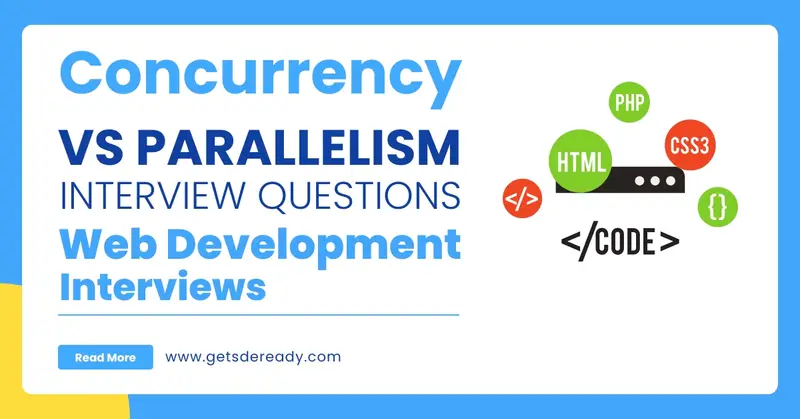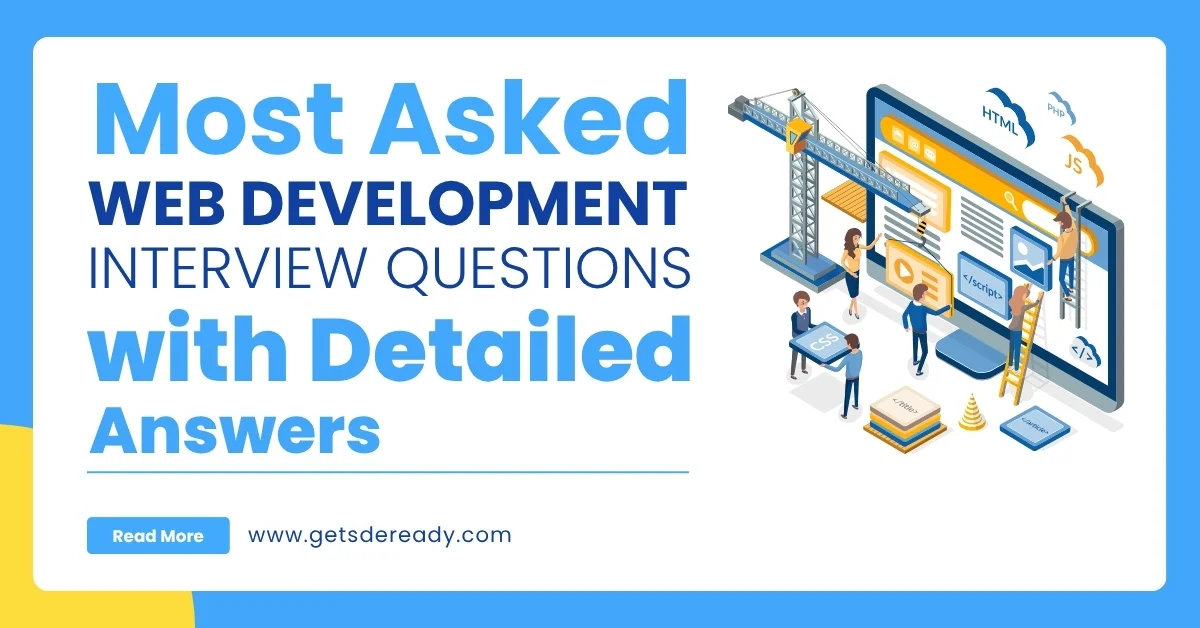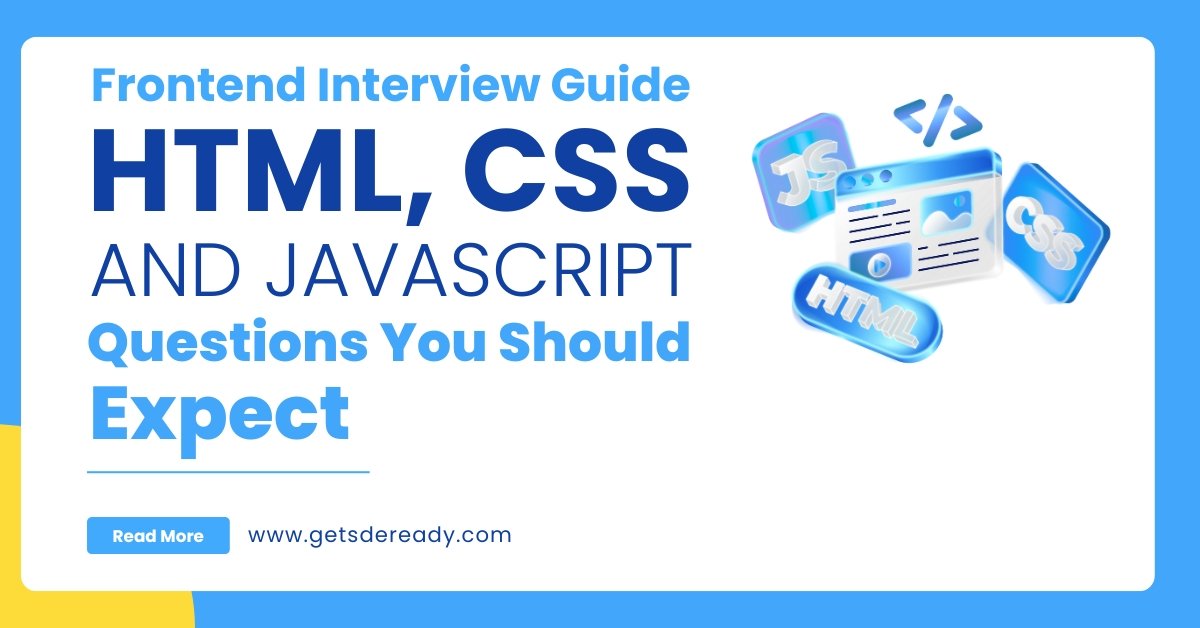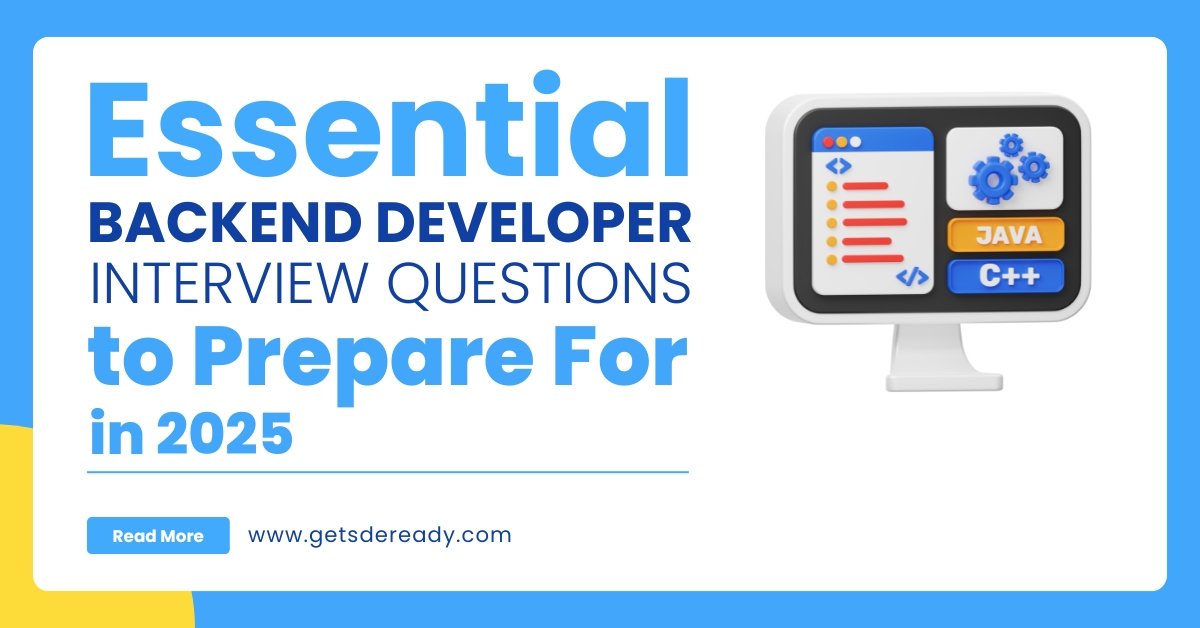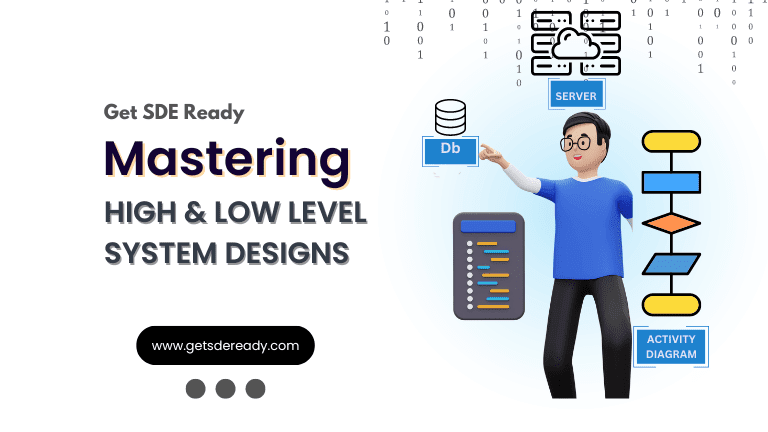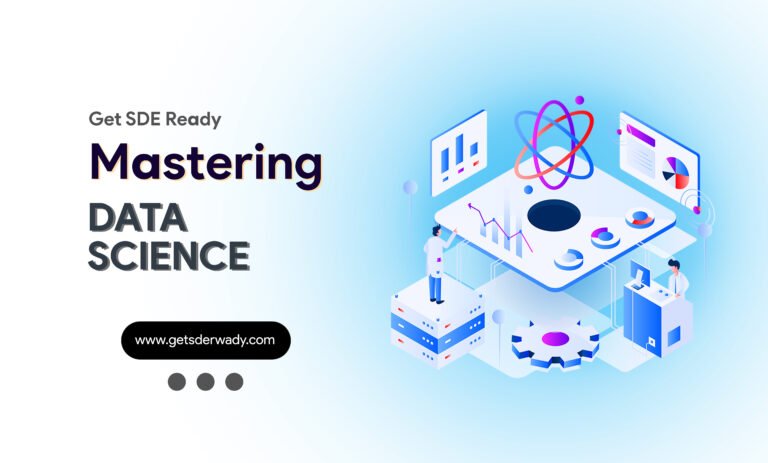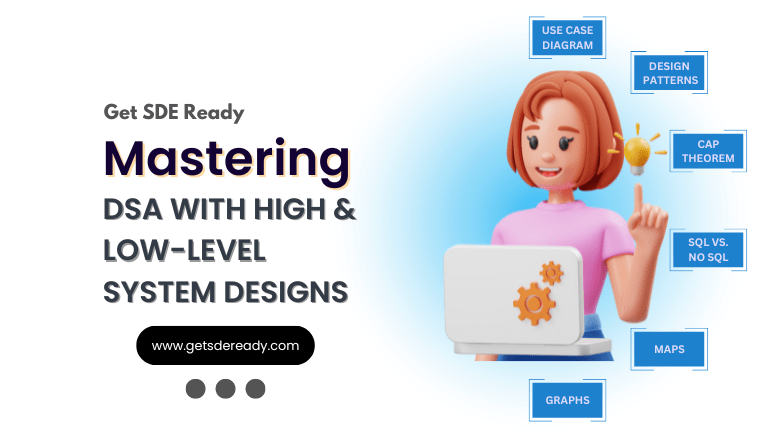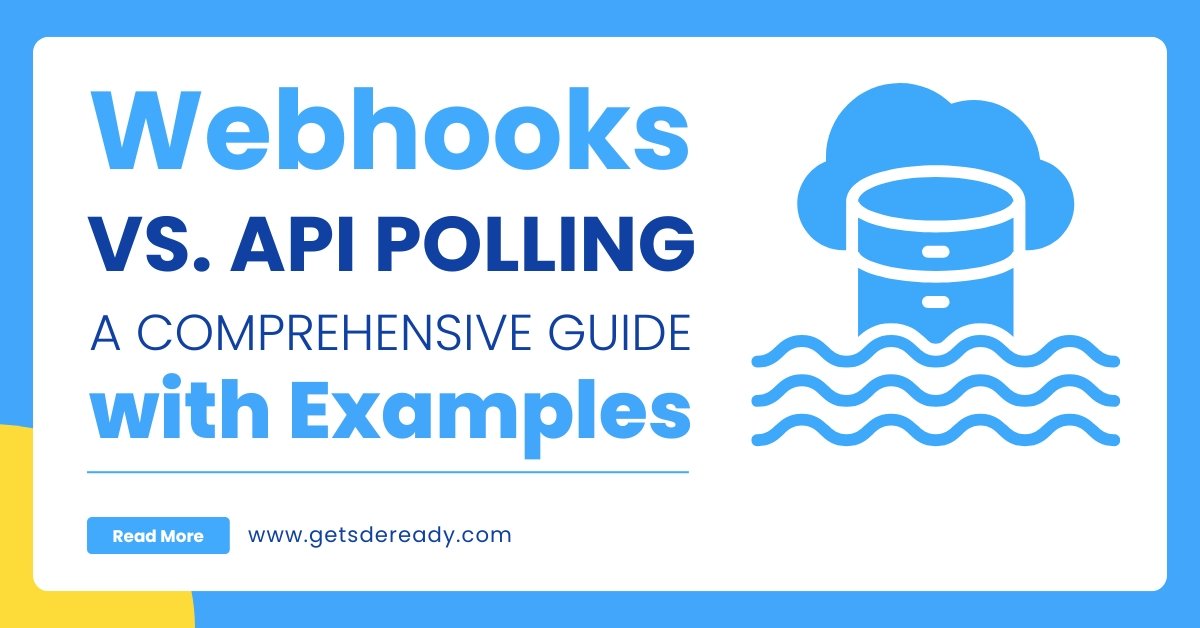
Top 15 High-Paying Companies Asking Advanced System Design Questions
System design interviews are among the toughest challenges candidates face when applying for top tech roles. A good system design interview evaluates how well you can design scalable, reliable, and maintainable systems, which are crucial for building large-scale applications used by millions of users. Many high-paying tech companies look for candidates who excel at system design, and their interviews feature advanced system design questions to assess candidates’ expertise.
In this article, we will explore the top 15 high-paying companies asking advanced system design questions. These companies are known for their rigorous interviews, and understanding their expectations can help you prepare effectively. We will break down their key interview processes, the types of system design questions they ask, and how you can ace these interviews.
1. Google: Pioneering in System Design Complexity
Google is renowned for its challenging system design interviews. The company hires engineers who are capable of building complex, scalable systems that can handle billions of users worldwide. Google’s interview process for system design revolves around understanding how well you can design large-scale systems, address potential bottlenecks, and provide solutions for system scalability, availability, and performance.
Key System Design Questions for Google:
- How would you design a globally distributed search engine?
- How would you design a scalable URL shortening service like Bit.ly?
Recommended Topic: Top 10 Google Software Engineering Questions
Google’s interviews typically include high-level design problems that test your ability to break down complex systems into manageable components. A strong understanding of algorithms and data structures is essential to succeed in these interviews.
2. Facebook: Real-World System Design Problems
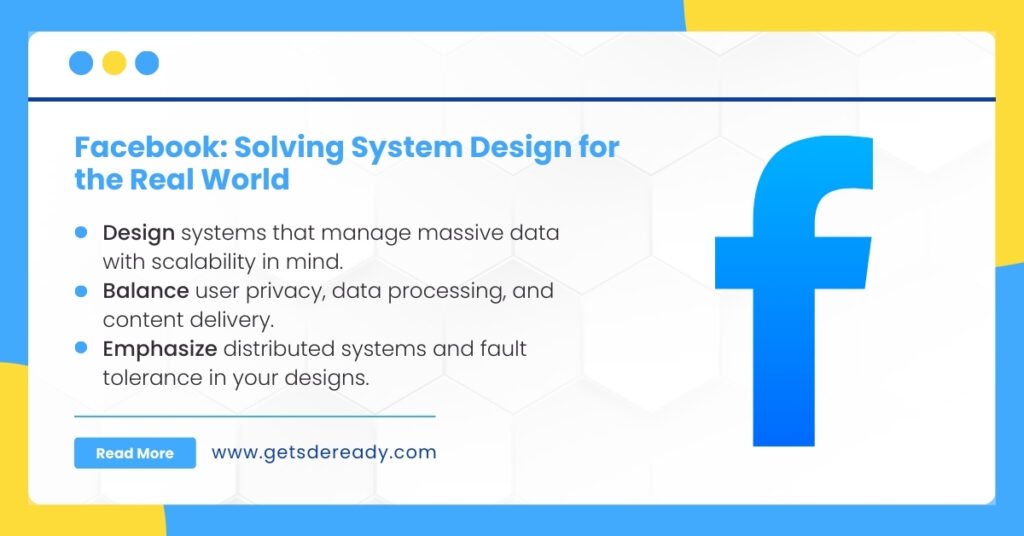
Facebook’s system design interviews are designed to test candidates on real-world scenarios. The company focuses on solving problems related to massive data processing, user privacy, and content delivery. Facebook engineers are expected to design systems that can scale efficiently while handling huge amounts of data.
Key System Design Questions for Facebook:
- How would you design a news feed for Facebook that supports personalized recommendations?
- How would you build a system that handles millions of concurrent live video streams?
Also Read: Top 15 Facebook Low-Level Design Questions
Facebook emphasizes the importance of designing systems that are both scalable and maintainable. Candidates should be ready to discuss their approach to distributed systems, fault tolerance, and data consistency.
3. Amazon: Reliability and Scalability at Scale
Amazon, known for its e-commerce and cloud services (AWS), requires candidates to have deep expertise in system design. They focus on designing highly available, reliable, and fault-tolerant systems. Amazon’s interviews typically involve questions related to designing scalable applications that can serve millions of users globally, often with real-time data requirements.
Key System Design Questions for Amazon:
- How would you design an order processing system for Amazon’s e-commerce platform?
- How would you design a recommendation system for personalized product suggestions?
Amazon looks for candidates who are capable of building robust systems that can handle high traffic and support large-scale data operations.
4. Microsoft: Building Enterprise-Grade Systems
Microsoft’s system design interviews test how well candidates can build complex systems for enterprises. They focus on designing systems that cater to corporate needs, including security, privacy, and high availability. Microsoft’s interview process is known for including questions that involve both cloud architecture and on-premises solutions.
Key System Design Questions for Microsoft:
- How would you design a cloud-based file storage service like OneDrive?
- How would you architect a system to handle millions of business emails every day?
Also Read: Top 10 Full-Stack Interview Questions
Candidates applying to Microsoft should be ready to discuss their approach to building secure, scalable, and resilient systems.
5. Apple: Designing User-Centric Systems
Apple places a significant emphasis on user experience, so its system design interviews often revolve around creating systems that focus on the user’s needs. Whether it’s designing an application that works seamlessly on Apple devices or scaling a backend service, Apple’s interviewers look for candidates who can create intuitive and robust systems.
Key System Design Questions for Apple:
- How would you design iCloud to handle millions of users syncing their files across devices?
- How would you design a system for real-time collaboration on Apple’s productivity apps?
Also Read: Top 15 System Design Frameworks in 2024
Candidates should be prepared to design systems that offer a seamless and highly responsive user experience.
6. Netflix: Optimizing Content Delivery Systems
Netflix, a leader in streaming media, requires candidates to design systems that deliver content efficiently and without delay. With millions of users accessing its platform worldwide, Netflix’s system design problems often focus on optimizing content delivery, managing video streaming, and ensuring that the system remains responsive even under heavy load.
Key System Design Questions for Netflix:
- How would you design a video streaming service that minimizes buffering?
- How would you architect a recommendation engine for Netflix?
Recommended Topic: Top 15 Python ML Interview Questions
Netflix’s system design questions emphasize performance optimization and ensuring that services can handle large-scale data efficiently.
7. LinkedIn: Networking at Scale
LinkedIn’s system design interviews focus on designing systems that support social networking at scale. Whether it’s designing a messaging platform or a recommendation engine, LinkedIn’s interview questions assess how well candidates can design systems that can scale while maintaining speed and reliability.
Key System Design Questions for LinkedIn:
- How would you design the LinkedIn recommendation system to suggest relevant jobs?
- How would you design a scalable messaging system for LinkedIn users?
Also Read: Top 20 API Design Interview Questions
Candidates should focus on designing systems that can scale efficiently, ensuring real-time responses while maintaining high availability.
8. Uber: Handling High-Volume Data
Uber’s system design interviews are focused on designing systems that can process massive amounts of real-time data. The company’s engineers design systems that can handle millions of users and drivers interacting on its platform, all while ensuring the system performs well even during high traffic.
Key System Design Questions for Uber:
- How would you design a real-time ride-sharing system that matches riders with drivers?
- How would you build a geospatial search system for Uber’s platform?
Also Read: Top 15 Frontend Interview Questions
Uber values candidates who can create reliable, scalable systems while maintaining high performance and low latency.
9. Airbnb: Designing for the Travel Industry
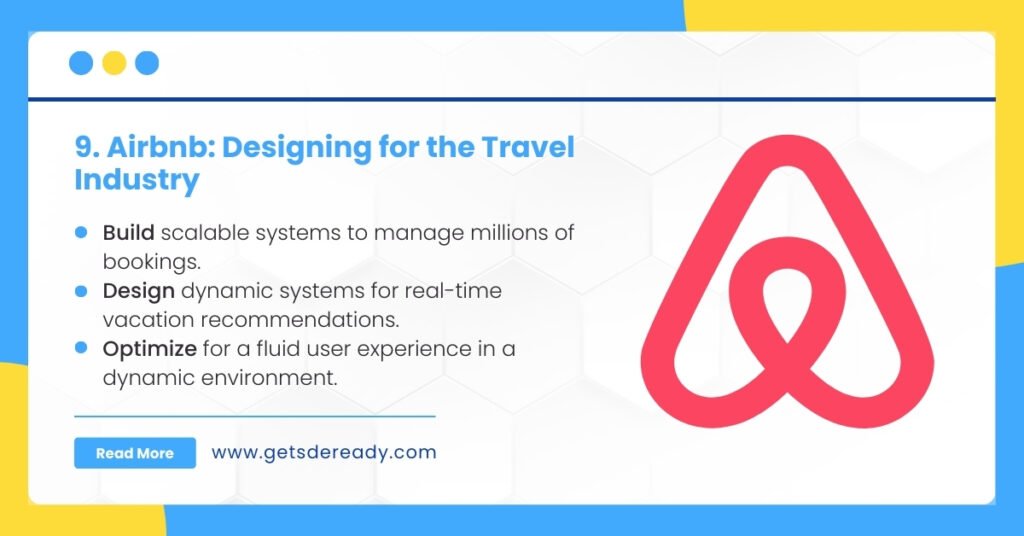
Airbnb requires candidates to design systems that support the travel and hospitality industries. The company is focused on ensuring a smooth user experience for millions of travelers and hosts, while also considering scalability and security.
Key System Design Questions for Airbnb:
- How would you design the booking system to handle millions of users and listings?
- How would you design a recommendation engine for vacation rentals?
Recommended Topic: 10 Steps for a System Design Portfolio
Airbnb’s system design questions focus on ensuring that systems can scale and operate efficiently in a highly dynamic environment.
10. Twitter: Real-Time Data Systems
Twitter’s system design interviews emphasize designing systems that handle real-time data at a massive scale. The company focuses on building services that can handle millions of users posting tweets, likes, and retweets every second.
Key System Design Questions for Twitter:
- How would you design Twitter’s real-time notification system?
- How would you handle scaling a microblogging platform for billions of users?
Also Read: Top 15 Blockchain Beginner Questions
Candidates applying to Twitter should be prepared to discuss high availability, low latency, and real-time data processing.
11. Snapchat: Designing for Media and Social Interaction
Snapchat requires system designers to create applications that handle real-time media sharing and social interaction. Given the unique nature of Snapchat’s features, such as ephemeral messaging and augmented reality, the company places high emphasis on performance and user experience.
Key System Design Questions for Snapchat:
- How would you design a messaging system that supports ephemeral content?
- How would you architect a scalable AR system for Snapchat?
Recommended Topic: Top 15 Blockchain Beginner Questions
Snapchat’s interview questions assess candidates’ ability to design cutting-edge media and social interaction systems that are both scalable and user-friendly.
12. Spotify: Designing Scalable Music Streaming
Spotify’s system design interviews focus on building music streaming services that handle large amounts of concurrent users. The company looks for candidates who can design systems capable of streaming millions of songs with minimal latency and buffering.
Key System Design Questions for Spotify:
- How would you design a system to recommend music to users based on their preferences?
- How would you architect a scalable music streaming service?
Also Read: Top 10 Backend Interview Questions
Spotify’s system design questions are centered on optimizing content delivery and maintaining system performance.
13. Stripe: Payment Systems at Scale
Stripe’s system design interviews focus on building scalable and secure payment systems. As a leader in the payments industry, Stripe requires candidates to design systems that handle large volumes of transactions while ensuring security and compliance.
Key System Design Questions for Stripe:
- How would you design a global payment gateway?
- How would you design a secure transaction processing system?
Also Read: Top 15 Python ML Interview Questions
Stripe looks for candidates who can design systems that ensure both security and scalability, given the sensitivity of financial data.
14. Pinterest: Handling Large-Scale Image Sharing
Pinterest’s system design interviews test how well candidates can handle large-scale image sharing. The company focuses on ensuring that its platform can scale efficiently and remain responsive as it serves millions of images and pins to users.
Key System Design Questions for Pinterest:
- How would you design an image storage and retrieval system for Pinterest?
- How would you design a recommendation system to suggest pins to users?
Recommended Topic: Top 20 Software Frameworks for 2025
Pinterest’s system design questions require candidates to have strong skills in handling image storage, retrieval, and large-scale recommendation systems.
15. Slack: Real-Time Messaging at Scale
Slack’s system design interviews assess candidates’ ability to design real-time messaging platforms that support millions of active users across the globe. Candidates are expected to design systems that are highly available, scalable, and capable of handling millions of messages with minimal latency.
Key System Design Questions for Slack:
- How would you design a messaging system that supports millions of active users?
- How would you design Slack’s notification system?
Recommended Topic: Top 10 Mobile App Design Questions
Slack’s system design questions test candidates on their ability to design real-time, scalable communication platforms.
Frequently Asked Questions
Why are System Design interviews important for high-paying companies?
System Design interviews evaluate your ability to create scalable and efficient systems, a key skill for top tech companies like Google and Amazon. To master this, you can check out our Master DSA, Web Dev & System Design Course.
How can I prepare for advanced System Design interviews?
Preparing for advanced System Design requires mastering concepts like load balancing and microservices. A great resource for this is our Design DSA Combined Course.
What mistakes should I avoid in System Design interviews?
Common mistakes include not asking clarifying questions and neglecting scalability. To prepare better, explore Key System Design Questions for Tech Interviews.
What are the best resources for studying System Design?
Structured courses, like the Design DSA Combined Course, offer a focused path to mastering System Design concepts.
How does mastering DSA help in System Design?
Mastering DSA helps in optimizing system components and solving performance issues. Start with our DSA Course to build a strong foundation.
Accelerate your Path to a Product based Career
Boost your career or get hired at top product-based companies by joining our expertly crafted courses. Gain practical skills and real-world knowledge to help you succeed.
Reach Out Now
If you have any queries, please fill out this form. We will surely reach out to you.
Contact Email
Reach us at the following email address.
Phone Number
You can reach us by phone as well.
+91-97737 28034
Our Location
Rohini, Sector-3, Delhi-110085
